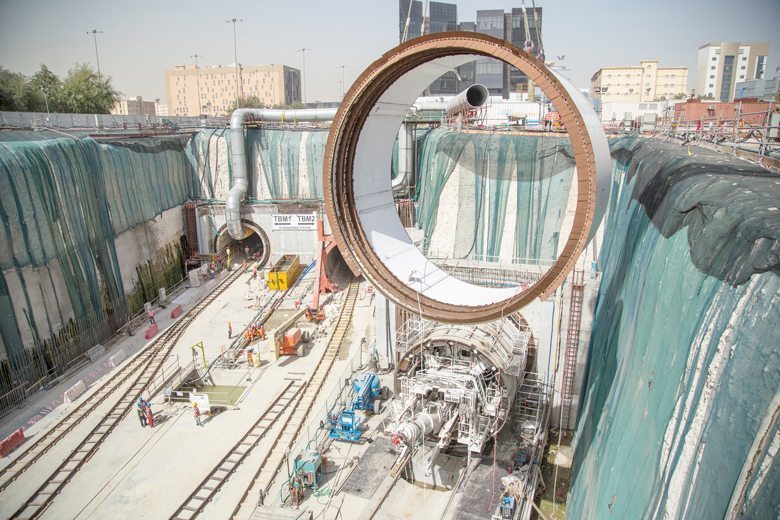

Public-private partnerships could work in the country, although not for existing and urgent projects
The case for public-private partnerships (PPPs) in Qatar is clear. A punishing $200bn-plus project slate and crimped public finances suggest private financing for critical infrastructure projects is the right fit.
As governments in the region seek to diversify their economies through the promotion of non-hydrocarbons industries, the private sector is being encouraged to help reduce oil and gas dependence. Qatar is no exception.
Traditional funding

Al-Rayyan stadium
Al-Rayyan stadium
However, the current focus of Qatars project pipeline World Cup-related schemes (stadium, metro and roads), as well as enlarging and improving infrastructure to cope with population growth and the need for additional services such as hospitals and schools as well as power means funding for those projects will mainly continue to use the state balance sheet and traditional contract terms. The governments finances are sufficiently healthy to allow this to continue for some time, even if PPP advocates are keen to point out their models advantages go beyond saving the state from spending its own precious cash.
Some of the biggest schemes in Qatar that could be procured as PPPs such as the Doha Metro are too far advanced in the procurement process to be re-engineered as PPPs.
While utility projects partly lend themselves to PPP, the metro has already used government funds or bank loans, says Giyas Gokkent, a senior economist at the Washington-based International Institute for Finance.
PPP law
Unlike Kuwait and Dubai, Qatar does not have its own PPP law yet, which adds another layer of risk for potential private sector operators of these schemes. With these kinds of encumberances, private sector risk appetite is likely to be too fragile to countenance PPP in the near term.

Qatar investment
Qatar investment
Nonetheless, there is a greater momentum behind introducing PPP in the country than there was three years ago, when UK law firm Clifford Chance prepared a draft PPP law.

Sidra Medical & Research Centre
Sidra Medical & Research Centre
The government is looking at alternative structures, mainly through PPPs, for upcoming hospital and school projects, and we are currently assisting the Economy & Commerce Ministry in relation to drafting the PPP law for Qatar, says Dani Kabbani, managing partner at the Doha office of UK law firm Eversheds.
Kahramaa [Qatar General Electricity & Water Corporation] generally finances its projects through a hybrid but effective PPP model that will most probably continue until a detailed law is in place.
That law is in the works, even if a timeline has yet to be announced. The Economy & Commerce Ministry received bids last year for advisory services on the development of a PPP regulatory framework and policy. Many law firms and consultancies are lobbying for the adoption of a model that would extend the use of PPPs from utilities to solid revenue-generating sectors such as education, healthcare and hospitality.
That law and regulatory framework when they arrive will provide the necessary reassurance for potential PPP investors in Qatar.
Steady acceptance
Other factors will steadily build the case for PPP in Qatar. According to Kabbani, these include a drive towards encouraging the enhancement of the investment climate and competitiveness; the increased employment of nationals in the private sector; and the improvement of government services in key sectors (education and healthcare), which reflects Qatars emphasis on the private sectors development to fulfil a key national role. Qatar was among the first adopters of the PPP model in the region, mainly in power generation projects, says Kabbani.
Eversheds is currently assisting the Economy & Commerce Ministry in drafting the PPP law and setting up a governance and supervisory framework.

Qatar bank loans
Qatar bank loans
Although the programme has leadership support, certain challenges will need to be addressed, such as clear risk allocation and well-defined costs and returns on investment, says Kabbani. Hence the necessity of having a dedicated PPP legal framework, which will help increase transparency, improve and unify the procurement process, and identify security rights granted to lenders.
Transport opportunities

Doha metro station
Doha metro station
While the Doha Metro may be too far advanced to make use of PPP structures, there could yet be time for other rail and transport schemes to adapt themselves. European franchise concessions have paid fees to the government for the use of the track, below-the-wheel: infrastructure. This model may be too challenging for Qatar, but a hybrid form seems feasible, in which the concession agreement details how much rolling-stock investment will be made.
There is little doubt that Qatar boasts the kind of AAA-rated sovereign creditworthiness that private investors like, with solid predictable revenue streams from its sizeable liquefied natural gas (LNG) exports.
With the likes of Dubai and Kuwait establishing legal frameworks for PPP, Qatar is expected to be next in the frame. There should be plenty of scope for a healthy slate of projects for private operators to get their teeth into, with schools and hospitals likely to be in the front row.
You might also like...

Aramco receives proposals for offshore LTA pool
25 April 2024

Global AI market to top $1tn in 2030
25 April 2024

Morocco tenders Noor Midelt 2
25 April 2024

Saudi Arabia's Roshn launches Aldanah Dhahran project
25 April 2024
A MEED Subscription...
Subscribe or upgrade your current MEED.com package to support your strategic planning with the MENA region’s best source of business information. Proceed to our online shop below to find out more about the features in each package.








